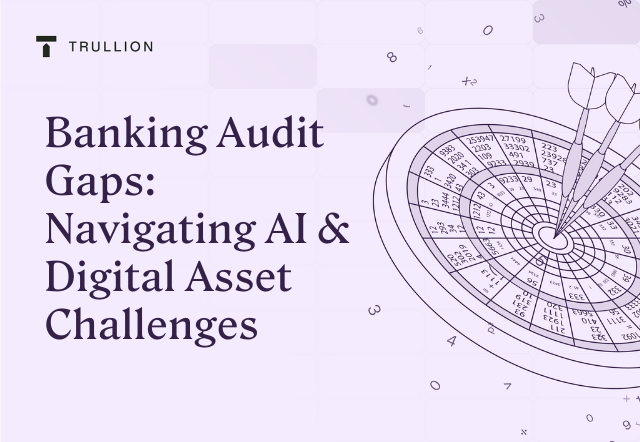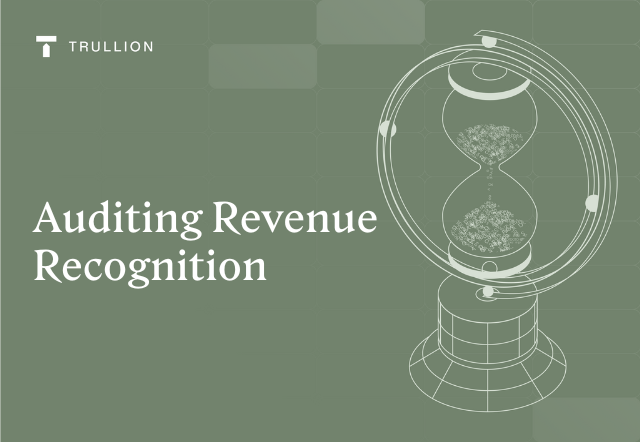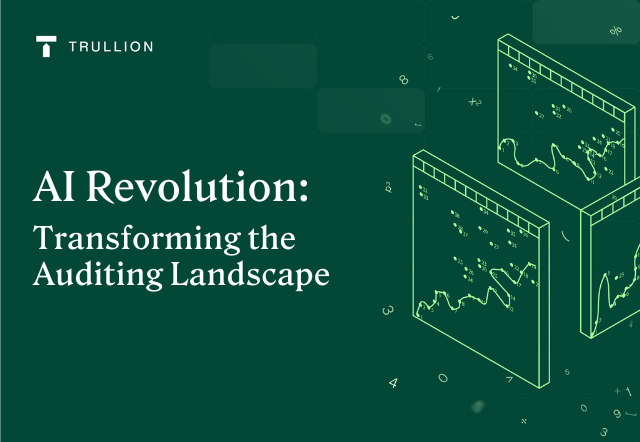The banking sector is a critical component of any economy, and with the increased regulation around accounting compliance, the public’s faith in the sector has been restored to some degree. However, despite these efforts, audit risk gaps remain, and the risk of over-leveraged banks continues to be a concern.
In this blog post, we’ll identify these audit risk gaps and explore why they persist even after regulatory measures have been put in place. Additionally, we will suggest a rethink of GAAP and audit norms to meet the challenges of the modern age of AI automation, digital assets, and media-driven sentiment.
Identifying Audit Risk Gaps in the Banking Sector
Risks, and particularly audit risks in the banking sector, are well known. This familiarity can breed a certain overconfidence that can in turn lead to disaster. Recently experienced fiascos in the SVB case and again with numerous regional banks confirm this.
Audit risks in the banking sector include risks such as operational risk, regulatory compliance, and cybersecurity-related risks.
Five key audit risks stand out however, for their potential to be misjudged and underestimated, especially in light of AI, digital assets, and social media contagion.
1. Credit Risk Assessment
Banks face significant credit risk when lending to customers. An audit risk gap may occur if the bank’s credit risk assessment models are not robust enough or if they fail to identify potential defaulting borrowers.
Auditors should assess the accuracy and adequacy of credit risk models and ensure that appropriate provisioning is made for potential loan losses.
Here’s the issue: many companies have assets on paper that are worth millions, if not billions of dollars. Yet some of these are digital assets, which, by virtue of being newer asset types, have less specific accounting requirements around them.
They are also, in many cases, less understood by non-experts. While not passing judgment on these assets, there is clearly more audit risk around them, especially if these are lumped – from an accounting perspective – with “traditional” asset classes.
For example, the business analytics platform MicroStrategy (MSTR) at one point held almost $4bn in Bitcoin. How should auditors relate to this? Does this asset carry the same level of risk as, say, an investment in municipal bonds? Clearly not.
This has huge ramifications for even high-level tests like the current ratio or the acid test ratio, never mind the loan-to-deposit ratio, capital adequacy ratio, and other asset quality and liquidity tests.
2. Market Risk
Banks often hold trading portfolios of financial instruments subject to market fluctuations. Audit risk can arise if the valuation of these assets is not accurate or if the bank lacks adequate controls to manage market risk effectively.
With banks increasingly holding non-typical assets or financial instruments – either directly or indirectly – this suddenly becomes a complex and somewhat subjective area for auditors to navigate.
3. Liquidity Risk
Inadequate liquidity can lead to a bank’s inability to meet its obligations. Auditors should assess the bank’s liquidity risk management practices to ensure they are robust and aligned with regulatory requirements.
We’ve seen recently how banks can have enough liquidity to pass regulatory tests and yet still fail to meet their obligations in the event of a run on the bank, for example.
This is exacerbated by today’s universal access to real-time social media activity. A trend or tweet can quickly go viral, overwhelming traditional safeguards. Are banks prepared for this? Are auditors, or even regulators for that matter?
4. Model Risk
Banks rely on various financial models for risk assessment, valuation, and forecasting. Audit risk arises if these models contain errors, assumptions are unrealistic, or if the bank does not validate them regularly.
It’s questionable as to how many models are based on outdated paradigms, where concepts like social virality, digital assets, meme stocks, and algorithmic trading were not taken into account.
5. Loan Portfolio Quality
Auditors need to examine the quality of the bank’s loan portfolio. If the bank is not appropriately assessing and classifying loans, it can result in an inaccurate financial picture and inadequate provisioning for loan losses.
Again, this begs the question: are assets (i.e. banks’ loan portfolios) valued correctly, especially in light of the surge in digital assets, new financial instruments such as derivatives for digital assets, and a completely new climate where social media meets retail investing?
We’ve discussed whether $1bn in Treasuries or $1bn in Bitcoin should be considered equal. On paper, they are. But in reality, the risks attached to the latter make for uncomfortable questions.
Gaps are acknowledged – While Change is Coming
Chairman of the House Financial Services Subcommittee on Digital Assets, Financial Technology and Inclusion, French Hill, noted that “There are glaring gaps in consumer and investor protections, and regulation by enforcement does nothing to fill these gaps.”
This while the Commodity Futures Trading Commission (CFTC) Chair recently called out “the lack of federal regulation over the digital commodity market” and advocated “bringing this volatile market out of the shadows and into the regulatory fold…to ensure market resilience and stability, and prevent contagion to the traditional financial system.”
From an accounting and auditing perspective, these issues ring alarm bells.
There is good news, though. Accounting standards setters have been proactive in attempting to address these concerns.
For example, the Financial Accounting Standards Board (FASB) recently approved new rules on accounting for crypto (though these don’t include digital assets such as NFTs or wrapped tokens).
These rules are aimed at “providing investors and other financial statement users with more transparency around these volatile assets” and also include expanded disclosure requirements.
Essentially, companies should now account for digital assets at fair value, with differences flowing through the income statement, instead of the previous method of recording at cost and then impairing when the value dropped (with no way to increase this value if the underlying asset rises.)
While this is a step in the right direction in that it shows that accounting rulemakers are grappling with these questions – FASB board member Marsha Hunt calls it “dealing with the world as it exists today, while writing standards for the world of tomorrow” – it arguably does not alleviate concerns around volatility and risk attached to these asset classes, new technologies, or social phenomena.
Meeting the Challenges of AI Automation and Digital Assets
To meet the challenges of the modern age of AI automation, digital assets, and media-driven sentiment, a rethink of GAAP and audit norms might be necessary. Traditional GAAP standards are designed for traditional assets and are not always appropriate for digital assets. Therefore, new accounting standards need to be developed that consider the unique properties of digital assets.
Similarly, auditors need to be trained in the valuation and verification of digital assets to ensure that they are accurately assessed. This training should also include a focus on the use of AI automation tools, which can help auditors analyze large datasets and detect anomalies in financial statements.
In addition to these changes, auditors need to be more proactive in identifying audit risk gaps in the banking sector. They should work closely with regulators to develop new audit standards that take into account the changing nature of the banking sector and the risks it faces.
A Safer Financial Future Is In Our Hands
While regulatory measures have gone a long way in restoring public faith in the banking sector, audit risk gaps remain. Over-leveraged banks and the lack of transparency around digital assets are significant concerns that need to be addressed. A rethink of GAAP and audit norms is necessary to meet the challenges of the modern age of AI automation, digital assets, and media-driven sentiment. By working closely with regulators and being more proactive in identifying audit risk gaps, auditors can help ensure the stability and health of the banking sector.










